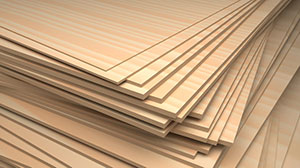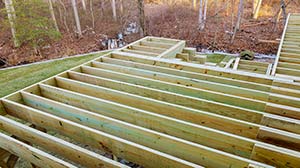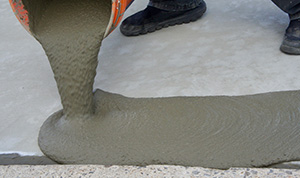
Construction adhesive is used often throughout building sites and DIY projects to bind various materials together. It creates a powerful bond that can be difficult to break apart, but luckily with the correct information and tactics, removing construction glue from most materials is possible.
Loosening construction adhesive is the first step to removing it. Begin by using an iron or heat gun to soften the glue and make it easier to remove. Once the adhesive is loose, use a putty knife to remove the construction adhesive. Petroleum jelly and mineral spirits can also help loosen adhesive.
Construction adhesive has a singular purpose of binding materials together, so removing adhesive can be frustrating and challenging without the correct information and techniques. Keep reading to figure out how to remove construction adhesive from various standard building and household materials that you might encounter.
How To Remove Construction Adhesives From Various Materials
Removing construction adhesive comes down to two primary steps in most cases: Loosening the glue and then scraping the adhesive off.
Depending on the material you’re removing construction adhesive from, the process changes slightly or is entirely different, but that is the basic idea.
You can use construction adhesive to bind nearly endless materials together, but below are a few of the most common applications:
- Wood
- Drywall
- Brick
- Tile
- Concrete
- Granite
- Cloth
So let’s get right into it and take a more in-depth look at each of the materials mentioned above and how to remove construction adhesive from each.
Removing Construction Adhesive From Wood
Removing adhesive from wood can be slightly tricky because wood is very porous and bonds well with glue. But be patient and give it enough effort, and you can get most construction adhesives off of wood eventually.
1. Scrape As Much Glue Off As Possible
Begin by using a handheld scraper or putty knife and a rubber mallet to remove as much of the adhesive as possible. Hold the putty knife along a ridge in the glue and use the mallet to hit the scraper’s handle. You usually can’t remove all the adhesive utilizing this method, so move on to the next step once you’ve removed as much as possible.
2. Soften The Glue
After you’ve removed as much excess adhesive as you can, it’s time to soften the remaining glue. Use an iron, heat gun, or blow dryer to heat the adhesive, so it becomes loose and malleable. If the heat alone isn’t working, you can add petroleum jelly, mineral spirits, or plain water to help speed up the process.
3. Scrape The Remaining Glue Off
Continue trading off between softening the adhesive and scraping it off using the putty knife and rubber mallet. If you’re still having trouble getting the glue off, spend some more time softening the adhesive or try out an alternative scraping device if you have one.
4. Sand The Wood If Necessary
And finally, once the majority of the adhesive is gone, you can use sandpaper to grind off any remaining remnants of glue. Depending on how nice you need the wood to look, you can start with high grit sandpaper and work your way down, or you can skip this step entirely.
Removing Construction Adhesive From Drywall
Drywall is quite brittle and porous, so removing construction adhesive from it can be challenging and impossible in some situations. If you still can’t get the glue off the drywall after trying the steps outlined below, you may need to cut out the section of drywall that’s affected and replace it.
1. Soften The Adhesive
When removing construction adhesive from drywall, the first thing to do is to soften the glue as much as possible. Generally, the best way to remove adhesive from drywall is to use mineral spirits. However, it would be best if you were extremely careful because it’s easy to mess up drywall with liquids permanently.
2. Scrape The Glue Off
After the construction adhesive is as loose and soft as possible, you need to scrape it off the drywall. Use a putty knife or a handheld scraper to remove the glue. It’s straightforward to mess this step up and gauge or dent the drywall, so make sure to proceed with caution and take your time.
3. Repair The Drywall If Necessary
Once you’ve removed the adhesive from the drywall, you’ll likely need to do a few repairs, resurfacing, or, at a minimum, repaint. Removing construction adhesive from drywall is a super delicate and challenging process, and it’s rare for the drywall to be utterly unscathed after the task.
Removing Construction Adhesive From Brick
Removing adhesives from brick surfaces can be difficult, but because brick is very resilient and hardy, you have the option to use some more extreme measures if necessary. Just remember to be patient and try a different strategy if one method isn’t working for you.
1. Scrape Off As Much Adhesive As Possible
When removing construction adhesive from brick, the first thing to do is to try scraping off as much as possible with a putty knife or scraper and a rubber mallet to hit the end of the scraper. Most of the time, you won’t be able to remove all the glue utilizing this method, so proceed to the next step once you’ve removed as much as possible.
2. Soften The Adhesive
Once you’ve removed as much adhesive as you can using the scraper, use an iron, heat gun, or blow dryer to loosen up the rest of the glue. If the heat isn’t enough to soften the remaining adhesive, applying some mineral spirits or petroleum jelly and letting it sit for a few hours will usually do the trick.
3. Remove All The Remaining Glue
You can remove the remaining glue after softening it with heat or another agent in various ways. Usually, the easiest method is to switch off between scraping the adhesive with a putty knife and continuing to soften it using one of the tactics mentioned above. If you’re okay with the surface of your brick getting some scratches, another option is to remove the glue using a sandblaster or pressure washer.
Removing Construction Adhesive From Tile
Removing adhesive from tile is challenging and time-consuming, but different types of tile are more porous, and therefore more difficult than others. Tile is also relatively delicate, so it’s essential to take it slow and not apply too much pressure.
1. Scrape As Much Glue Off As Possible
Scraping adhesive off a tile is an essential first step, so there is less glue to soften later on, but you need to be careful not to chip the tile with your scraper or putty knife accidentally. To have more control over your movements, it’s probably best if you don’t use a hammer or rubber ballet to hit the end of your scraper when removing adhesive from tile.
2. Soften The Adhesive
After removing as much adhesive as possible with your putty knife, it’s time to loosen the glue from the tile using a heat gun, an iron, a blow dryer, petroleum jelly, or mineral spirits.
3. Scrape The Remaining Adhesive Off
Once the adhesive on the tile is soft and loose, you can use your putty knife or scraper again to remove the remaining glue. Remember to take it slow, and don’t hesitate to apply more heat or mineral spirits if the adhesive hardens again while you’re working to remove it.
4. Clean The Tile
You likely won’t be able to remove all the adhesive with a putty knife, so once you’ve removed as much as possible, you can go over the surface with a sponge and some mineral oil. The mineral oil will help to loosen up any remaining glue and clean the tile without the possibility of chipping or harming it.
Removing Construction Adhesive From Concrete
Removing construction adhesive from concrete can be a tiresome and challenging task, especially if you have to remove a lot of it after taking up a floor. Concrete is highly resilient and tough, so you shouldn’t worry about using some more extreme methods to remove the adhesive.
1. Soften The Glue
While you could technically skip straight to removing the adhesive from the concrete, softening it will make the process much easier and slightly more enjoyable. There are many ways you can go about softening the adhesive, but the best way is to use a heat gun or apply mineral spirits and let it sit for a few hours.
2. Remove The Adhesive
Once the adhesive is soft and loose, it’ll be much easier to remove. A putty knife will usually do the trick for small glue areas, but that may be too tedious and time-consuming for bigger areas. If you have a lot of glue to remove from concrete, you may find it easier to use an angle grinder, powerwasher, or floor sander.
Removing Construction Adhesive From Metal
Metal is a particularly challenging material to remove adhesive from because it easily scratches but is also very strong. You can often get away with using some pretty extreme measures to remove the glue, but you must be mindful not to scratch or gouge the metal accidentally.
1. Scrape The Adhesive Off
If the metal that you’re working with scratches easily, you may want to skip this first step. However, if the metal doesn’t scratch easily, or you’re not concerned about the look of the metal, removing as much adhesive will make softening the glue faster and easier. Just use a putty knife or scraper and a rubber mallet to remove as much glue as possible.
2. Soften The Glue
When softening adhesive on metal, be careful about heating the glue using a heat gun, iron, or blow dryer. While it usually won’t hurt, heating some metals can discolor or weaken the metal, so it’s always best to do it in moderation or only use mineral spirits and petroleum jelly to soften the glue.
3. Remove The Remaining Adhesive
Once the adhesive is as soft as possible, removing the remaining glue from the metal is pretty straightforward. Use a putty knife to carefully remove the adhesive and add more heat or mineral spirits if it begins to harden while you’re working. In some extreme cases, using a pressure washer to remove the remaining glue may be necessary.
How To Remove Construction Adhesive That Hasn’t Dried Yet
You can remove construction adhesive that hasn’t dried yet with a sponge and some water. Just dunk the sponge in some warm water, ring it out, and then lightly wipe down the area where you want to remove the glue.
Removing construction adhesive that has fully dried can be challenging and time-consuming, but if you get the adhesive in the wrong place or change your mind before it dries, it’s an entirely different story.
It usually won’t come off in one swipe, so keep going over the glue with your sponge, and it’ll eventually come off. If the adhesive is on a surface that permits it, you can also add a little mineral oil to help it loosen up.
How To Remove Construction Adhesive From Your Skin
To remove adhesive from your skin, soak it in warm soapy water for a few minutes to soften the glue, then carefully peel it off. If you’re working with construction adhesive, it’s nearly impossible not to get it all over your hands and skin. Luckily, it’s quick and easy to remove with the proper materials and technique.
- Latex-Based Construction Adhesives
Wash your hands and skin thoroughly with warm water and soap.
- Solvent-Based Construction Adhesives
Wash your hands and skin with mineral oil or petroleum jelly, and then rinse with warm water.
- Other Types of Construction Adhesives
You can clean other types of adhesives that are not solvent or latex-based from your skin using the above methods or by rubbing the affected area down with a dry rag.
Conclusion
Construction adhesive is designed to bond two materials together and not let go, so removing it can be a lengthy and challenging process.
When removing construction adhesive, the most important thing is to soften the adhesive using heat, mineral spirits, or petroleum jelly as much as possible before trying to remove it. Removing dried construction glue is difficult enough on its own, so do everything you can to make the experience easier and more enjoyable, even if it’s just by a little.







